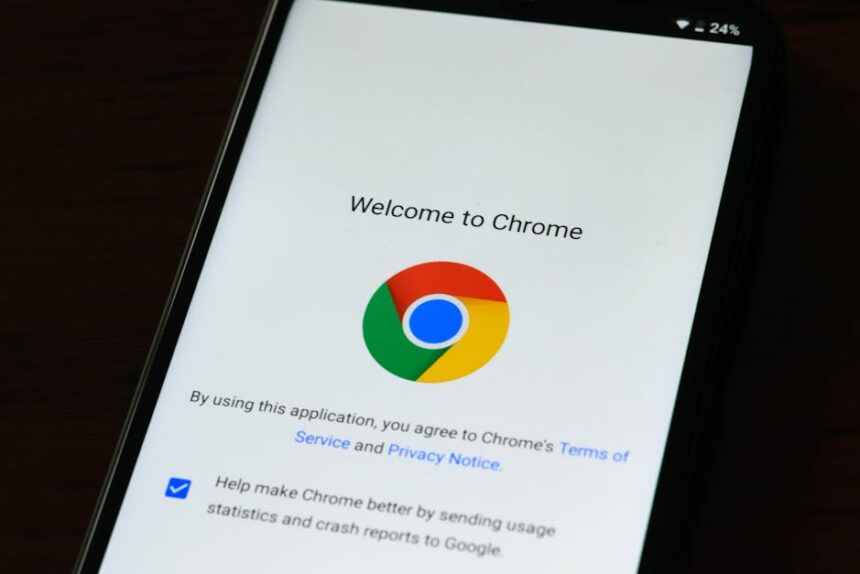The convergence of mobile technology and local search has fundamentally reshaped how consumers discover and engage with businesses in their immediate vicinity. In an era where smartphones are ubiquitous extensions of our daily lives, local search on mobile devices represents the primary digital gateway for driving physical foot traffic. Businesses that master the intricacies of mobile local SEO unlock unparalleled opportunities to capture high-intent customers actively seeking products and services in their geographic area. This detailed exploration delves into the multi-faceted strategies and critical considerations for optimizing your digital presence to convert mobile searches into tangible visits to your storefront.
Understanding the Mobile-First Imperative in Local Search
The shift from desktop to mobile as the dominant search platform is not merely a trend; it is a foundational change in user behavior. Mobile devices are inherently location-aware, facilitating on-the-go searches with immediate intent. When a user searches for “coffee shop near me” or “mechanic in [city name]” on their smartphone, they are typically looking for an instant solution and are often prepared to act on that information. Google’s mobile-first indexing further underscores the critical importance of a mobile-optimized presence, evaluating the mobile version of a site as the primary determinant for ranking. For local businesses, this means that every aspect of their online visibility, from website design to directory listings, must be engineered with the mobile user experience at its core. The immediacy and localized nature of mobile queries demand a frictionless experience, providing quick answers, direct contact options, and clear navigational cues. Failing to prioritize mobile optimization is akin to being invisible in the very moments potential customers are most ready to buy.
Google Business Profile (GBP) Optimization: The Cornerstone of Mobile Local SEO
Google Business Profile (formerly Google My Business) is the undisputed kingpin of local search visibility on mobile. It is the primary interface through which your business appears in Google Maps, the local pack results, and the knowledge panel for branded searches. A meticulously optimized GBP listing is non-negotiable for driving foot traffic.
Claiming and Verifying Your GBP: The foundational step is to claim and verify your GBP listing. This process ensures you have full control over the information displayed. Verification typically involves receiving a postcard with a code, a phone call, or an email, confirming your physical location. Without verification, your ability to edit critical details is severely limited.
Accurate and Consistent NAP Information: NAP stands for Name, Address, and Phone number. Consistency across all online platforms – your GBP, website, social media, and third-party directories – is paramount. Discrepancies, even minor ones, can confuse search engines and erode trust with potential customers. Ensure your business name is exactly as it appears on your storefront, your address is precise, and your phone number is current and preferably local. These details are frequently used by mobile users for quick calls or navigation.
Strategic Categorization and Attributes: Choosing the correct primary and secondary categories for your business is crucial. Categories tell Google what your business does, influencing what searches you appear for. Be specific but also broad enough to capture relevant long-tail queries. Beyond categories, utilize GBP attributes to highlight specific features or amenities, such as “wheelchair accessible,” “free Wi-Fi,” “outdoor seating,” or “online appointments.” These attributes cater to specific user needs and can differentiate your business, especially on mobile where users often filter by these options.
High-Quality Photos and Videos: Visual content is a powerful engagement tool on mobile. Upload professional, high-resolution photos of your storefront (exterior and interior), products, services, team members, and common areas. Google actively encourages businesses to add photos, and users frequently browse image galleries before making a decision. Videos, though less common, can offer a dynamic view of your operations. Ensure all images are well-lit and accurately represent your business. Geotagging photos can also provide an additional signal of your location.
Google Posts and Offers: Google Posts allow businesses to publish short updates directly to their GBP listing. These can be used to announce new products, promotions, events, or general updates. For mobile users, posts appear prominently and offer a direct call-to-action (e.g., “Learn More,” “Buy,” “Sign Up,” “Call Now”), encouraging immediate engagement and potentially driving visits. Regular, relevant posting keeps your GBP listing fresh and active.
Q&A Management: The Questions & Answers section on your GBP allows users to ask questions about your business, and anyone (including the business owner or other users) can answer. Proactively monitor this section and answer questions promptly and accurately. You can also “seed” common questions with your own answers to address frequent queries upfront, saving customers time and providing valuable information before they even visit.
Review Management: Soliciting and Responding: Online reviews are arguably the most influential factor in local search, especially on mobile. High ratings and a significant volume of reviews signal trust and authority to both Google and prospective customers.
- Soliciting Reviews: Actively encourage satisfied customers to leave reviews. This can be done through polite requests in person, via email follow-ups, or QR codes at your location linking directly to your review page. Make the process as easy as possible for the customer.
- Responding to Reviews: Respond to all reviews, both positive and negative. Thank customers for positive feedback, reinforcing their experience. For negative reviews, respond professionally, empathetically, and constructively. Offer solutions or take the conversation offline if necessary. Your responses demonstrate excellent customer service and commitment, influencing other potential customers.
Mobile-Optimized Website: The Digital Storefront for Local Search
While GBP is critical for initial visibility, your website serves as the detailed digital representation of your business. For mobile local SEO, your website must be flawlessly optimized to complement your GBP and provide a seamless user journey from search to visit.
Responsive Design: A Non-Negotiable Standard: A responsive website automatically adjusts its layout, images, and content to fit the screen size of the user’s device, whether it’s a smartphone, tablet, or desktop. This ensures an optimal viewing experience without requiring users to pinch, zoom, or scroll excessively. Google penalizes non-responsive sites in mobile search results, making it an absolute requirement for local visibility.
Mobile Page Speed (Core Web Vitals): Speed is paramount for mobile users. Slow-loading websites lead to high bounce rates and frustrated customers. Google’s Core Web Vitals – Largest Contentful Paint (LCP), First Input Delay (FID), and Cumulative Layout Shift (CLS) – are direct measures of user experience related to page loading, interactivity, and visual stability.
- Optimize Images: Compress images without sacrificing quality. Use modern image formats like WebP.
- Minify Code: Reduce the size of CSS, JavaScript, and HTML files by removing unnecessary characters.
- Leverage Browser Caching: Store common elements of your site on the user’s device to speed up subsequent visits.
- Utilize a Content Delivery Network (CDN): Serve content from servers geographically closer to your users.
- Prioritize Above-the-Fold Content: Ensure critical information loads first.
Schema Markup (Structured Data): Schema markup provides context to search engines about the content on your website, helping them understand specific entities and their relationships. For local SEO, several types of schema are particularly valuable:
- LocalBusiness Schema: Provides detailed information about your business, including NAP, operating hours, accepted payment methods, and geographic coordinates.
- AggregateRating Schema: Displays your average rating and number of reviews directly in search results, increasing click-through rates.
- Service and Product Schema: Details the services or products you offer, making them more discoverable in specific searches.
- Event Schema: Useful for businesses hosting special events, making them appear in event-specific searches. Implementing schema correctly can lead to rich snippets in mobile search results, making your listing stand out.
Local Content Strategy: Your website’s content needs to reflect your local focus and cater to the specific needs of your target audience.
- Location Pages: If you have multiple locations, create dedicated, unique pages for each. These pages should include specific NAP for that location, unique descriptions, local testimonials, directions, operating hours, and localized content about services offered there.
- Blog Posts with Local Keywords: Create blog content that addresses local issues, events, or topics relevant to your business. Examples include “Best [Product/Service] in [City/Neighborhood],” “Guide to [Local Attraction] and Nearby Businesses,” or “Supporting Local [Cause/Event] in [City].” This strategy captures long-tail keywords and demonstrates local expertise.
- Geographically Specific Landing Pages: For specific services, create landing pages optimized for a particular town or neighborhood, clearly stating your service area.
Call-to-Action (CTAs) for Mobile Users: Mobile users have immediate needs. Your website must provide clear, easy-to-use CTAs that facilitate direct engagement.
- Click-to-Call Buttons: Prominently display your phone number as a clickable link, allowing users to call directly from their mobile device.
- Get Directions Buttons: Integrate Google Maps directly or provide a clear link to directions, enabling one-tap navigation.
- Online Appointment Scheduling/Booking: If applicable, offer mobile-friendly scheduling tools.
- Mobile-Optimized Forms: Ensure contact forms are concise, easy to fill out on a small screen, and have clear submission buttons.
Citations and Local Directories: Building a Consistent Digital Footprint
Beyond GBP and your website, a robust network of citations across various online directories reinforces your local presence and boosts trust signals. A citation is any online mention of your business’s NAP information.
Consistency of NAP: The golden rule of citations is absolute NAP consistency. Even minor variations (e.g., “St.” vs. “Street,” or different phone number formats) can confuse search engines and dilute your authority. Use a consistent format for your name, address, and phone number across all listings.
Top-Tier Directories: Prioritize listing your business on major, high-authority directories that frequently appear in local search results. These include:
- Yelp
- Facebook (via your business page)
- Bing Places for Business
- Apple Maps
- Yellow Pages
- Foursquare
- TripAdvisor (for hospitality/tourism)
- Healthgrades (for healthcare)
Niche-Specific Directories: Depending on your industry, there may be specialized directories that are highly relevant to your target audience. For example, Houzz for home services, Avvo for legal services, or Zocdoc for medical practitioners. These niche directories often carry significant weight within their respective communities.
Data Aggregators: Companies like Infogroup, Localeze, and Factual (now Foursquare) collect business data and distribute it to hundreds of other online platforms. Ensuring your information is accurate with these aggregators can significantly improve your citation profile across the web. While often a paid service, it can save considerable time and ensure widespread consistency.
Manual Citation Building vs. Automated Services: You can manually create listings on individual directories, which offers granular control but is time-consuming. Alternatively, consider using citation management services (e.g., Moz Local, BrightLocal, Yext). These services automate the process of creating and updating listings across a wide range of directories, ensuring consistency and accuracy. However, be aware that some services tie your listings to their subscription, potentially removing them if you cancel.
Regular Auditing: Periodically audit your citations to identify and correct any inconsistencies or errors. Businesses can move, change phone numbers, or alter their name, making regular checks essential to maintain accuracy. Tools exist to help identify these discrepancies, allowing you to manually correct them or use a service to update them.
Online Reviews and Reputation Management: The Social Proof for Foot Traffic
Online reviews are a potent form of social proof, directly influencing consumer decisions and significantly impacting local search rankings on mobile. A strong, positive review profile can be the decisive factor in a customer choosing your business over a competitor.
Importance of Reviews for Local Rank: Search engines view reviews as a reliable indicator of a business’s quality and customer satisfaction. Factors like the quantity, velocity (frequency), diversity, and sentiment of reviews all play a role in local search algorithms. More reviews, especially positive ones, signal a popular and trustworthy business, leading to higher rankings in the local pack and map results.
Strategies for Generating Reviews:
- Direct Ask: The simplest and most effective method. Politely ask satisfied customers in person, via email, or SMS after their visit or purchase.
- Simplify the Process: Provide direct links to your Google Business Profile review page or create a QR code customers can scan. Remove any friction points.
- Follow-Up: Send automated or manual follow-up emails/SMS messages after a service or purchase, gently reminding customers to leave a review.
- In-Store Signage: Place signs or cards in your business encouraging reviews.
- Employee Training: Train your staff on how and when to ask for reviews, ensuring they understand the importance.
- Avoid Incentives: Do not offer incentives (discounts, freebies) for positive reviews, as this violates Google’s guidelines and can lead to penalties. Focus on genuine feedback.
Responding to Reviews (Positive & Negative): Your engagement with reviews is as crucial as the reviews themselves.
- For Positive Reviews: Thank the customer by name, acknowledge their specific feedback (e.g., “We’re glad you enjoyed our [specific dish/service]!”), and reinforce your brand values. A simple, “Thanks for the great review!” is better than nothing, but a personalized response is ideal.
- For Negative Reviews:
- Respond Promptly: Address issues quickly to show you care.
- Be Professional and Empathetic: Acknowledge their concern and apologize for any shortcomings. Avoid being defensive or getting into an argument.
- Offer a Solution (if applicable): Propose a way to resolve the issue or invite them to discuss it offline. “We’re sorry to hear about your experience. Please contact us directly at [phone number/email] so we can make this right.”
- Learn from Feedback: Use negative reviews as opportunities to improve your business operations.
- Don’t Delete (if possible): While you can flag truly spammy or inappropriate reviews, generally, it’s better to address negative feedback publicly. It shows transparency and a commitment to customer satisfaction.
Monitoring Tools: Utilize tools like Google Business Profile Insights, dedicated review management software (e.g., Birdeye, Reputation.com, GatherUp), or even Google Alerts to stay on top of new reviews across various platforms. Proactive monitoring allows for timely responses and helps you identify trends in customer feedback.
Local Link Building Strategies: Enhancing Authority and Trust
While different from traditional SEO link building, local link building focuses on acquiring links from locally relevant websites. These links signal to search engines that your business is a legitimate and valued part of the community, contributing to your local authority and ultimately, your mobile search rankings.
Hyperlocal Content Initiatives: Create content that is intrinsically tied to your local area.
- Local Event Sponsorships/Participation: Sponsor local sports teams, charity events, school functions, or community festivals. This often leads to your business being listed on the event’s website with a link back to yours.
- Local News and Media Coverage: Engage with local journalists or bloggers. If your business has a unique story, offers a new service, or participates in a local initiative, it could lead to valuable press mentions and links.
- Partnerships with Complementary Local Businesses: Collaborate with non-competing businesses in your area. For example, a bakery linking to a local coffee shop they supply, or a real estate agent linking to a local moving company. These partnerships can result in reciprocal links or mentions.
- Local Resource Guides: Create comprehensive online guides about your city or neighborhood, including local attractions, restaurants, or services. Reach out to other local businesses or organizations to include them (and potentially get a link back).
Community Engagement and Sponsorships: Beyond content, active participation in the local community can naturally generate links and mentions.
- Chamber of Commerce Membership: Joining your local Chamber often includes a directory listing and a link to your website.
- Local Non-Profits and Charities: Supporting local charities or non-profits, whether through donations, volunteering, or event participation, can result in your business being acknowledged on their websites.
- Local Associations and Clubs: Membership in professional or community-based associations relevant to your industry or location can provide valuable links and networking opportunities.
Providing Testimonials: Offer testimonials for other local businesses you use and genuinely endorse. This is a subtle yet effective way to build relationships that can lead to reciprocal links in the future.
Supplier and Manufacturer Links: If you carry products from specific manufacturers or work with local suppliers, check if they feature their partners or retailers on their websites. A link from a trusted supplier can be a strong signal.
Scholarships and Educational Initiatives: Sponsoring a local scholarship or offering internships can lead to links from educational institutions’ websites, which are highly authoritative domains. This is a long-term strategy but yields powerful results.
Mobile-Specific Advertising: Complementing Organic Local SEO
While the core focus of this article is organic local SEO, mobile-specific advertising strategies can significantly amplify your foot traffic generation efforts, particularly when paired with a strong organic foundation. These paid avenues provide immediate visibility and granular targeting.
Google Local Services Ads (LSAs): For specific service-based businesses (e.g., plumbers, electricians, locksmiths, HVAC), LSAs appear at the very top of Google search results, even above traditional organic and paid ads. They feature a “Google Guaranteed” badge, building immediate trust. LSAs are pay-per-lead, meaning you only pay when a customer contacts you directly from the ad. This is incredibly effective for mobile users seeking immediate, trusted service providers.
Geofencing and Location-Based Advertising: This advanced targeting method allows businesses to define a virtual perimeter (geofence) around a specific geographic area, such as a competitor’s location, a local event, or a commercial district. When a mobile user enters this geofenced area, they can be served targeted ads on their mobile devices (via apps or mobile websites). This enables highly precise outreach to potential customers who are physically near your business or relevant points of interest.
Google Ads with Location Extensions: Traditional Google Search Ads can be significantly enhanced for local purposes by utilizing location extensions. These extensions display your business address, phone number, and a map icon directly within your text ad. On mobile, users can click to call or get directions instantly. Combining relevant local keywords with strong location extensions ensures your ads are highly effective for driving local intent.
Social Media Geotagging and Local Ads: Platforms like Facebook, Instagram, and Yelp offer robust local advertising options.
- Facebook/Instagram Local Awareness Ads: These ad types are specifically designed to reach people near your business location. You can target users within a custom radius and promote offers, events, or simply drive brand awareness.
- Geotagged Posts: Encourage customers to geotag your business in their social media posts. This organic social proof exposes your business to their network and signals local relevance.
- Yelp Ads: For businesses heavily reliant on Yelp for customer acquisition, Yelp ads can increase visibility within their platform’s search results and related business pages.
These paid strategies, when used strategically and in conjunction with strong organic local SEO, create a formidable multi-channel approach to driving foot traffic.
Tracking and Analytics for Mobile Local SEO: Measuring Success and Refining Strategy
Effective local SEO is an iterative process. Without robust tracking and analytics, it’s impossible to understand what’s working, what’s not, and where to allocate resources. Mobile local SEO requires specific metrics and tools to measure performance.
Google Analytics for Mobile Traffic:
- Mobile Traffic Segmentation: Analyze your website traffic specifically from mobile devices. Understand user behavior patterns: which pages they visit, how long they stay, and their bounce rates.
- Mobile Conversion Rates: Track conversions (e.g., form submissions, click-to-call, direction requests) originating from mobile users. Are mobile users converting at a similar, higher, or lower rate than desktop users?
- Engagement Metrics: Pay attention to metrics like “Average Session Duration” and “Pages per Session” for mobile users. Are they engaged with your mobile site, or are they quickly leaving?
- Source/Medium Analysis: Determine where your mobile traffic is coming from (organic search, direct, referral, social). This helps identify successful channels.
Google Business Profile Insights: This powerful, free tool within your GBP dashboard provides invaluable data on how customers are finding and interacting with your listing:
- Search Queries: See the exact queries users searched for to find your business, both direct (branded searches) and discovery (non-branded searches). This highlights opportunities for keyword optimization.
- How Customers Find Your Business: Differentiates between searches on Google Maps and Google Search.
- Customer Actions: Tracks critical actions taken directly from your GBP listing:
- Website Visits: Clicks to your website.
- Direction Requests: Clicks for directions to your location. This is a direct measure of foot traffic intent.
- Phone Calls: Clicks to call your business.
- Photo Views: How often your photos are viewed compared to competitors.
- Peak Popular Times: Shows when your business is busiest, helping with staffing and promotions.
Call Tracking: For businesses where phone calls are a primary conversion point, implementing call tracking software is essential. This allows you to assign unique, trackable phone numbers to your GBP listing, website, and different marketing campaigns. You can then attribute calls to specific sources, record conversations (with consent), and analyze call quality and conversions.
UTM Parameters for Website Links: When linking to your website from various local directories or campaigns, use UTM parameters (Urchin Tracking Module) to tag the URLs. This allows Google Analytics to precisely identify the source, medium, and campaign that drove the traffic. For example, a link from Yelp to your website could include ?utm_source=yelp&utm_medium=citation&utm_campaign=local_seo.
Local Rank Tracking Tools: Utilize specialized SEO tools (e.g., BrightLocal, Moz Local, SEMrush, Ahrefs) that offer local rank tracking. These tools monitor your business’s ranking for specific keywords in localized search results, often allowing you to track performance at a neighborhood or even street level.
Customer Feedback Analysis: Beyond quantitative data, qualitative feedback from reviews, surveys, and direct customer interactions provides crucial insights into their mobile experience and overall satisfaction. Are they complaining about slow load times? Difficulty finding information? This feedback loop is essential for continuous improvement.
Emerging Trends and the Future of Mobile Local SEO
The landscape of mobile local SEO is constantly evolving. Staying ahead of emerging trends ensures your business remains competitive and continues to attract foot traffic digitally.
Voice Search Optimization: The rise of smart speakers and voice assistants (Siri, Google Assistant, Alexa) means more users are conducting local searches conversationally.
- Conversational Keywords: Optimize content for natural language queries (e.g., “Where is the best pizza near me?” instead of “pizza delivery [zip code]”).
- Long-Tail Keywords: Voice queries tend to be longer and more specific.
- Question-Based Content: Structure FAQs and blog posts to directly answer common questions users might ask via voice.
- GBP Accuracy: Voice search often pulls information directly from GBP, making its accuracy even more critical.
Visual Search: Platforms like Google Lens allow users to search using images. For local businesses, this means high-quality, recognizable images of products, storefronts, and landmarks are increasingly important for discoverability.
- Optimized Image Content: Ensure your images are well-tagged with descriptive alt text and relevant local keywords.
- Product Catalogs: For retail, ensuring your product images are clear and descriptive can help you appear in visual searches.
Augmented Reality (AR) in Local Search and Navigation: AR applications, like Google Maps’ Live View, overlay digital information onto the real world via a smartphone camera. This can offer enhanced navigation, display business information in real-time as users walk down a street, or even let them “try on” products virtually.
- Enhanced GBP Data: Rich, accurate GBP data will be crucial for AR overlays.
- 3D Models/Virtual Tours: Businesses might explore creating 3D models of their storefronts or virtual tours to enhance AR experiences.
Artificial Intelligence (AI) and Machine Learning: AI increasingly powers search algorithms, making them more sophisticated at understanding user intent, context, and personalized results.
- Entity Understanding: AI helps Google understand businesses as entities, linking them to specific locations, services, and attributes more effectively.
- Personalization: Search results are becoming highly personalized based on user history, location, and preferences. Businesses need to focus on relevance and quality.
- Predictive Local Search: AI might eventually anticipate user needs, pushing relevant local businesses even before a query is explicitly made.
Hyper-Personalization and Micro-Moments: The future emphasizes delivering the right information at the exact moment a user needs it, based on their real-time location and immediate context. Businesses need to ensure their digital presence caters to these “I want to go,” “I want to do,” “I want to buy,” and “I want to know” micro-moments.
Advanced Tactics for Competitive Local Niches
In highly competitive markets, standard local SEO practices may not be enough to stand out. Businesses need to implement more advanced, strategic approaches to differentiate themselves and capture a larger share of mobile foot traffic.
Competitor Analysis and Gap Identification:
- Analyze Top Local Competitors: Identify who consistently ranks at the top of the local pack and map results for your target keywords.
- GBP Audit: Scrutinize their Google Business Profiles. What categories do they use? How many reviews do they have, and what’s their average rating? How often do they post? What attributes do they highlight?
- Website Analysis: Examine their mobile website experience. How fast is it? What local content do they publish? Do they use schema markup effectively?
- Citation Audit: Use tools to identify where their business is cited online. Are there any high-authority local directories they’re listed on that you’re not?
- Review Strategy: Understand their review generation and response tactics.
- Identify Gaps: Pinpoint areas where your competitors are strong and where they have weaknesses. This allows you to either catch up or exploit their deficiencies. For example, if a competitor has a weak review profile, focus heavily on generating more positive reviews. If their website is slow on mobile, optimize yours for lightning speed.
Hyper-Specific Targeting and Niche Dominance: Instead of trying to rank for broad, highly competitive terms, focus on becoming the authority for hyper-specific services or product niches within your local area.
- Long-Tail Local Keywords: Target phrases like “vegan gluten-free bakery [neighborhood name]” or “emergency plumbing repair [specific suburb].” These queries have less competition and higher purchase intent.
- Service-Specific Local Pages: If you offer multiple services, create dedicated landing pages for each service, optimized for local keywords (e.g., “Muffler Repair in [City]” vs. just “Auto Repair”).
- Local Landing Pages for Different Suburbs/Towns: If your service area spans multiple distinct localities, consider creating separate, unique content for each to capture specific geographic searches. This avoids generic “service area” pages.
Leveraging Unique Selling Propositions (USPs) in Local SEO:
- Highlight Differentiators: What makes your business unique? Is it a specific type of product, unparalleled customer service, a unique ambiance, or a charitable initiative? Emphasize these USPs in your GBP description, website content, and social media.
- Schema for Specific Features: Use schema markup to highlight unique attributes or specialized services that set you apart.
- Review Solicitation for Specific Strengths: Encourage customers to mention your USPs in their reviews. For example, if your coffee shop is known for its latte art, encourage reviews that mention it.
Continuous A/B Testing and Optimization:
- GBP Post A/B Testing: Test different types of Google Posts, CTAs, and images to see what drives the most engagement and clicks.
- Website CTA Optimization: Experiment with the placement, color, and wording of your mobile CTAs (e.g., “Call Now” vs. “Get a Quote”).
- Landing Page Variations: Test different versions of your local landing pages to see which converts mobile users most effectively.
- Review Solicitation Methods: Experiment with different timing and phrasing for your review requests.
Integrated Offline and Online Strategies: For truly competitive markets, the line between digital and physical blurs.
- In-Store Promotions tied to Online Actions: Offer discounts for leaving a review, checking in on social media, or signing up for an email list (while adhering to review guidelines).
- Local Events and Workshops: Host events that draw people to your physical location, then promote them heavily online and encourage online engagement during and after the event.
- QR Codes: Strategically place QR codes in your store that link to your GBP review page, social media profiles, or specific product pages.
Mastering mobile local SEO is not a one-time task but an ongoing commitment to optimizing your digital presence for the always-on, location-aware consumer. By meticulously refining your Google Business Profile, ensuring a lightning-fast and responsive website, building a consistent citation profile, proactively managing your online reputation, strategically acquiring local links, and embracing emerging mobile technologies, businesses can transform mobile searches into a steady stream of valuable foot traffic, securing their place in the local economy of the future.











